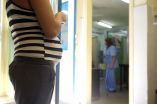(Press-News.org) A new study analyses the violent behaviours exhibited towards pregnant women. While 21% of women suffer emotional violence during pregnancy, 3.6% encounter physical or sexual violence. Furthermore, 36.1% of those who reported physical violence claimed that it happened "very often" or "daily".
Whilst for many women pregnancy is a happy time, for almost one in four it turns out not to be so enjoyable. An investigation into the prevalence of domestic violence against pregnant women has found that 22.7% endure some kind of violence - emotional, physical or sexual - within their relationship.
The data, gathered from a sample of 779 women who gave birth in 15 state hospitals in Andalusia, can be extrapolated to the rest of Spain and other countries with similar sociocultural environments. The participating midwives were trained to collect the data, which took place in full anonymity and confidentiality.
"Until now there had been no studies of this kind in Spain, and consequently the magnitude of this problem in our midst was unknown," Stella Martín de las Heras, researcher at the University of Granada and main author of the study, explains to SINC. "The consequences, however, are very serious, both for the health of the mother and that of the foetus."
In this study, intimate partner violence was discovered using two internationally standardised instruments, the Abuse Assessment Screen (AAS) and the Index of Spouse Abuse (ISA).
"We think that the way questions are asked could impact the discovery of violence in various cultural contexts, and this is borne out in the results we obtained," Martín de las Heras adds.
The results, published in the journal 'Acta Obstetricia et Gynecologica Scandinavica', show that the prevalence of partner violence against pregnant women is high in Spain when compared with nearby countries, in which the figure hovers around 3.4% to 8.3%.
"With these figures, detection of violence should be routinely included in pregnancy management, and protocols for action should be established where necessary," she suggests. "The involvement and motivation of health professionals is crucial."
Significant differences between methods
When the data were analysed with the two detection instruments separately, considerable differences between them were discovered. The AAS found that 7.7% of pregnant women underwent some form of violence, while using the ISA this figure rose to 21.3%.
"I cannot explain the reasons behind this discrepancy, because each study has used a different methodology and drawing conclusions from this is not possible," the lecturer in the department of Legal Medicine, Toxicology and Biological Anthropology affirms. "What is beyond doubt is that the figures make us reflect on the potential health implications for the woman and the foetus."
The mean percentage found in this study (22.7% of women who suffer some kind of violence in their relationship) was obtained by joining together the results from the AAS and ISA, without duplicating the cases discovered.
The divergence between the two methods lies in the manner in which questions are asked. The AAS is based on very general questions, in which women have to self-define as abused. On the other hand, with the ISA method, women respond to imagined everyday life experiences.
For example, when responding to the statement "my partner demands that I obey his whims", the majority of the women surveyed did not believe that such behaviour amounted to violence, justifying it as their "partner's character".
In this way, the ISA detects situations and their frequencies, which, when taken together, determine whether a woman is being violently mistreated. "However, if one were to directly ask the women if they thought that they were being mistreated, they might respond with no," stresses Martín de las Heras.
Statements such as "my partner gets angry and is impossible to deal with when I tell him he is drinking too much" were responded to affirmatively by over 10% of women.
Furthermore, almost 18% of women responded affirmatively, to differing degrees, to the question, "My partner gets angry if I don't agree with him."
Types of violence
The authors analysed the various types of violence women can fall prey to. 21% of women were subjected to emotional violence and 3.6% to physical or sexual violence during pregnancy. "Although emotional violence is more common, we must not dismiss physical violence as it is especially serious during pregnancy," the researcher continues.
In fact, 36.1% of women who reported physical violence said that it happened "very often" or "daily" and 20.3% categorised it as severity level 3 - severe bruises, burns or broken bones. Moreover, three women reported suffering physical violence to the abdomen.
The study also looked at the sociodemographic factors that could be linked to violence during pregnancy, such as age, education, occupation, nationality, type of relationship and cohabitation, and support in their environment.
Martín de las Heras points out that some stereotypes did not appear among the results: "For example age and place of origin. Younger women are no more likely to be subject to violence during pregnancy. Neither are women with foreign (not Spanish) nationality, who in our study came from Latin America and North Africa."
However, pregnant women who maintained non-committed relationships or did not have support from the communities around them - a family member or friend to turn to in times of need - were more likely to suffer intimate partner violence when pregnant. By contrast, women who worked were better protected against such violence.
INFORMATION:
Reference:
Velasco C, Luna JD, Martin A, Caño A, Martin-de-las-Heras S. 'Intimate partner violence against Spanish pregnant women: application of two screening instruments to assess prevalence and associated factors'. Acta Obstet Gynecol Scand 2014; 93: 1050-1058.
Contact:
Stella Martin de las Heras
Departamento de Medicina Legal, Toxicología y Antropología Física
Universidad de Granada
Email: stella@ugr.es END
For the first time researchers have measured large distances in the Universe using data, rather than calculations related to general relativity.
A research team from Imperial College London and the University of Barcelona has used data from astronomical surveys to measure a standard distance that is central to our understanding of the expansion of the universe.
Previously the size of this 'standard ruler' has only been predicted from theoretical models that rely on general relativity to explain gravity at large scales. The new study is the first to measure it using ...
About 95 percent of the more than 10,000 bird species known only evolved upon the extinction of dinosaurs about 66 million years ago. According to computer analyses of the genetic data, today's diversity developed from a few species at a virtually explosive rate after 15 million years already. KIT scientists designed the algorithms for the comprehensive analysis of the evolution of birds. To obtain the results that are now presented in the Science journal, a computing capacity of 300 processor-years was required. (DOI 10.1126/science.1253451)
"Computation of these trees ...
This news release is available in Spanish. What is more, this study is the first one conducted using forensic samples taken from deceased individuals. So they examined all the sudden deaths that underwent forensic analysis and which took place in Bizkaia over a seven-year period, between January 2003 and December 2009. The post-mortem examinations were conducted by the only service existing in the province: the Forensic Pathology Service of Bizkaia of the Basque Institute of Forensic Medicine. The research has been published by the specialised journal Addiction, the ...
A study involving scientists from the University of Leicester has established a link between hypoglycaemia and increased risk of cardiovascular events and mortality in patients with diabetes.
Professors Kamlesh Khunti and Melanie Davies, scientists from the University of Leicester's Diabetes Research Centre, have confirmed an association between hypoglycaemia and an increased risk of cardiovascular events and mortality in insulin-treated patients with diabetes, which could lead to changes in the way some patients' treatment is managed. The results were published online ...
Communication protocols for digital devices are very efficient but also very brittle: They require information to be specified in a precise order with a precise number of bits. If sender and receiver -- say, a computer and a printer -- are off by even a single bit relative to each other, communication between them breaks down entirely.
Humans are much more flexible. Two strangers may come to a conversation with wildly differing vocabularies and frames of reference, but they will quickly assess the extent of their mutual understanding and tailor their speech accordingly.
Madhu ...
Crocodilians, including the Australian saltwater crocodile, mutate at about a quarter of the rate of birds, new research has revealed.
The discovery is the result of genome sequencing three crocodilian species - the Australian saltwater crocodile, the American alligator and the Indian gharial - by an international collaboration of scientists, including six from the University of Sydney's Faculty of Veterinary Science.
The research is reported in a special edition of Science published on 12 December dedicated to all aspects of bird evolution and its closest living biological ...
New research published today in the journal Physical Review Letters describes how recreating isotopes that occur when a star explodes, can help physicists understand where life-supporting elements may be found in space.
For the first time, a research team led by the University of Surrey, Japan's RIKEN Nishina Centre and the University of Beihang, was able to observe the isotopes of certain elemental chemicals formed as a star explodes. The isotopes of these elements (samarium and gadolinium) are sensitive tracers of the way that stars explode, and therefore help in ...
The first ever landing of a man-made probe onto a comet has been named Physics World Breakthrough of the Year for 2014.
From a shortlist of 10 highly commended breakthroughs, the historic achievement by scientists working on the Rosetta mission was singled out by the Physics World editorial team for its significance and fundamental importance to space science.
The landing of the Philae probe, which captivated not only the physics community but millions of people worldwide, was the culmination of 10 years' work by scientists at the European Space Agency (ESA), who successfully ...
WINSTON-SALEM, N.C. - Dec. 12, 2014 - Understanding how nitrite can improve conditions such as hypertension, heart attack and stroke has been the object of worldwide research studies. New research from Wake Forest University has potentially moved the science one step closer to this goal.
In a paper published online ahead of print in the February issue of the Journal of Biological Chemistry, senior co-author Daniel Kim-Shapiro, professor of physics at Wake Forest, and others show that deoxygenated hemoglobin is indeed responsible for triggering the conversion of nitrite ...
A study looking at Jamie's Ministry of Food Australia 10-week program has found that it brings not only a change in attitudes but also in behavior when buying healthy food. The research published in the open access journal BMC Public Health has found that these changes continue up to six months after completion of the program.
Jamie's Ministry of Food was a campaign started with the aim of encouraging people to develop cooking skills to prepare simple, fresh and healthy food easily and quickly. It is based on a British initiative during the Second World War, which was ...




